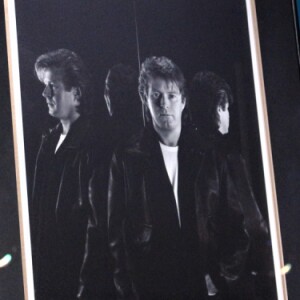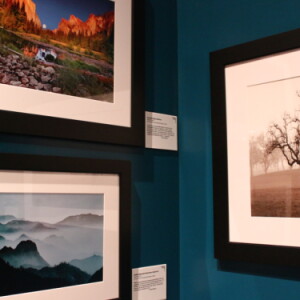Harpsichord 1761
My cousin Gail and I had a much delayed day out today. We had not spent any time together in a couple of years (yeah, Covid happened). We decided to go to the Upstate History Museum in Greenville to see the photography of American music legend, Kenny Rogers. He would take photos of the US while he was touring for his concerts but also made portraits of his music and actor friends. A couple of his photos in the extras. It was an interesting exhibit.
There was also an exhibit of Andy Warhol's art. No photos allowed there but what a strange mind he had and what amazing art he came up with.
Next to the art museum was the Sigal Music Museum. Mr Sigal was from Massachusetts and was a noted collector of antique musical instruments from around the world as well as the components of the recording and the broadcast music history Upon his death his family was looking to endow a museum dedicated to the preservation of all his collection in one place. The music museum was chosen as this location even though it could not hold all his instruments from harpsichords, pianos, brass and woodwind instruments and any thing else pertaining to music, it has access to a large warehouse for storage and could rotate exhibits on a continuing basis. We were lucky today to see pianos and harpsichords from the early 1700s to more current. A piano that Chopin played, the piano made in America in the early 1800s for the French General Lafayette upon his return to the US after the Revolutionary War. A harpsichord that was hid during the French Revolution by the owners having the legs removed and burying the base of the piano. The photo above is the harpsichord commissioned by King George III for his soon to be wife Charlotte Mecklenburg of Germany. We were shown the areas of the keys where they were worn as she loved to play a certain sound. The first Steinway grand piano was there. The upper area of the museum was full of old recordings and record players but a visual view of the music playing evolution...spools of tapes, 8 track, cassettes, walkman to ipod. Another view of part of the "music room" in the extras. The piano there is from a South Carolina plantation that somehow survived the Union soldiers burning in 1864. The portrait is the lady that owned the piano. We spent a long afternoon in this museum asking questions.
A good day (but long 12 hour) of learning some history and seeing the items that have stood the test of time and wars. We never even ate lunch but did manage a cookie and a drink before driving home.




Comments
Sign in or get an account to comment.


